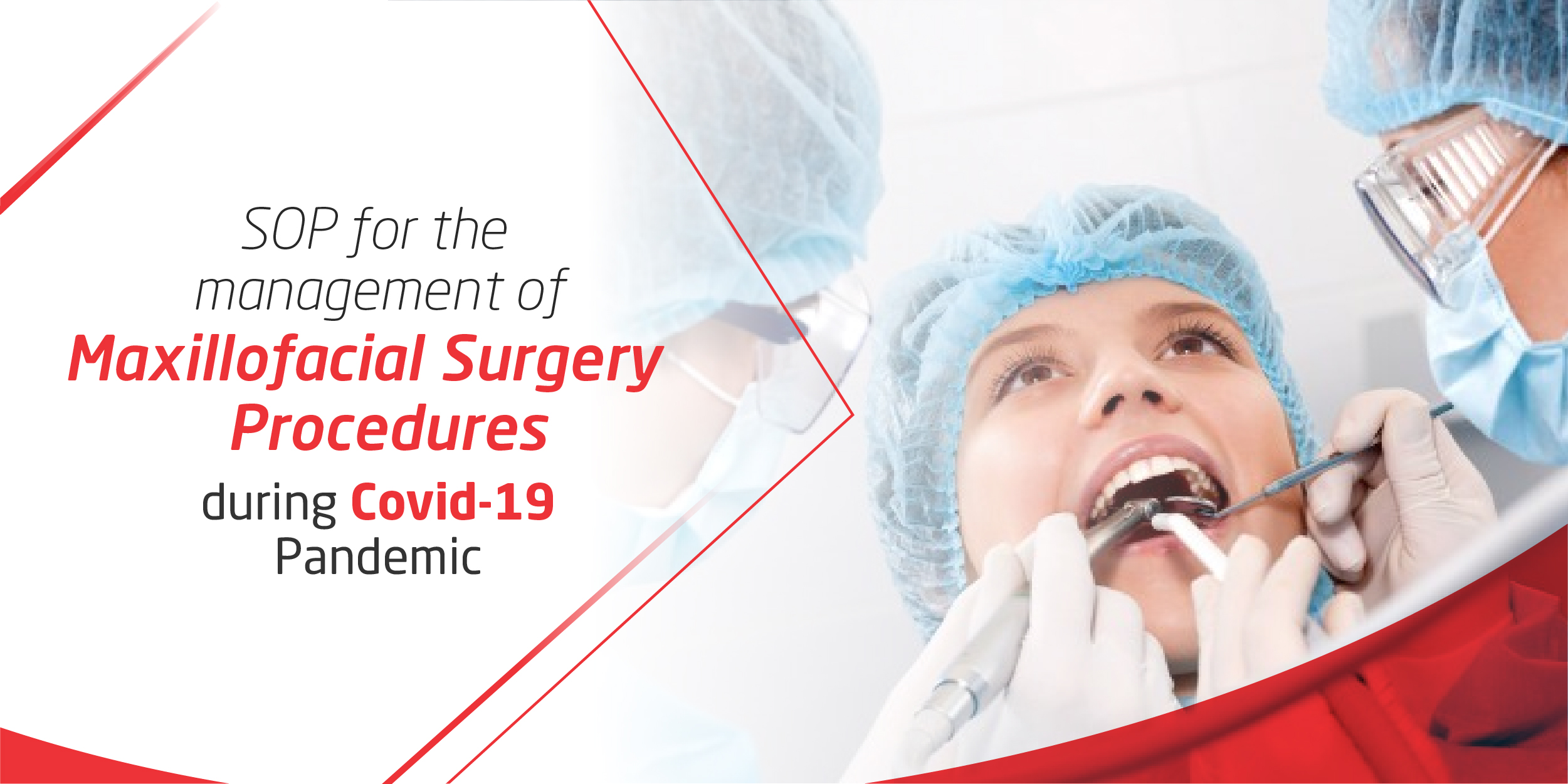
SOP FOR THE MANAGEMENT OF MAXILLOFACIAL SURGERY PROCEDURES DURING COVID-19 PANDEMIC
The following SOP is based on AO CMF International Task Force Recommendations on Best Practices for Maxillofacial Procedures during COVID-19 Pandemic as of 26 March 2020 and will be discussed under the following headings.
|
The COVID-19 pandemic is now a global problem that has significantly impacted the safe practice of Maxillofacial Surgery.
Surgical procedures involving the nasal-oral-endotracheal mucosal region is high risk due to aerosolization of the virus which is known to be in high concentration in these areas when compared to swabs from the lower respiratory tract. Further it appears that if viral particles become aerosolized, they stay in the air for at least 3 hours, if not longer. Based on experience in Wuhan, China, and Northern Italy, N95 masks were not enough to control this spread of the disease and it was not until PAPRs (Powered Air-Purifying Respirators) were introduced that transmission of the virus was controlled among medical personnel. It has been reported that the entire staff (14 people) of an operating room in Wuhan were infected during an endoscopic trans-sphenoidal pituitary procedure, and there was a significant mortality of otolaryngologists and ophthalmologists in the Wuhan region, thought to be related to exposure to aerosolized virus from the nasal and oral airway mucosa .
General Comments/Observations
All routine, elective procedures including dental should be cancelled and rescheduled when safe management strategies have been clearly identified. Ambulatory visits should be limited to those patients requiring urgent intervention or follow-up. N-95 with eye protection or PAPR should also be considered for urgent clinic prodecures. Non-urgent visits can be replaced by a telephone conversation, or videoconference if local regulations permit, and resources are available.
Procedures should be limited to those involving emergent airway management, epistaxis, surgical management of facial fractures which require ORIF, and oncologic procedures in which a delay in management could affect ultimate outcome.
All patients should be assumed to be infected and treated accordingly unless they have had 2 negative COVID-19 tests separated by at least 24 hours due to the possibility of false negative results. In most regions testing of asymptomatic patients is not possible and some trauma patients will not be able to provide a history to risk stratify the patient.
Consideration should be given to limiting patient contact in surgeons that are over 60 years of age, are immunosuppressed, have chronic pulmonary disorders, or multiple co-morbidities. The number of residents and ancillary staff should be limited as much as possible. Proper PPE and training for all members of the team is required.
Specific Recommendations
All procedures listed below are considered high risk, as they create aerosolization of viral particles. PPE recommended for all procedures below are minimum requirement N95 (FFP2) mask plus face shield (or mask/with attached shield over N95), gloves, nonporous gown, disposable hat. Scrubs worn during the procedure should be changed immediately afterwards. It is generally accepted that FPP3 or PAPR provides better protection and should be used in place of N95 mask if available. We realize that PAPRs may not be widely available, and other systems or strategies can be used such as the Stryker Flute system with a FFP3 mask, or and FFP2 or FFP3 mask combined with goggles and a hood.
Airway Management
Intubation should be performed by the most experienced member of the team. This is not the time for multiple attempts, and letting everyone have a turn. Paralysis should be considered to limit coughing. Limit the amount of mask/bag ventilation prior to intubation, and avoid jet ventilation, suctioning as much as is absolutely necessary to mitigate aerosolization. Intubation is preferred over placement of LMA. For a surgical case, the OR team should be outside the door for 20 minutes following intubation before entering the OR. After this 20-minute delay, the team should enter with appropriate PPE (N95 or PAPR). The reason for this is after an aerosol generating procedure (AGP), the virus could be present. Based on the OR air exchange per hour, 99% of pathogens should be clear in 14 minutes, and 99.9% by 21 minutes. All unnecessary personnel should be outside the room for extubation and an oxygen mask should be placed over the face after the tube is removed to mitigate aerosolization with coughing.
Tracheostomy in COVID-19 patients is performed for similar indications to non-COVID patients. Mortality in patients intubated for COVID-19 associated respiratory failure is greater than 50% and duration can be 3 - 6 weeks.
CMF Trauma
Procedures should be performed by an experienced surgeon, with a minimal number of assistants possible. In general, closed procedures, if internal fixation is not required for stability of the reduction are favored. Specific recommendations follow based on the anatomical region.
Lower face / mandible fractures:
Midface fractures :
Upper face fractures / frontal sinus procedures:
Advisement Concerning Dental Procedures
(adapted from AAOMS 03/17/2020)
This is an evolving and constantly changing situation, and these recommendations are based on the best available information at this time. Please remember, these are recommendations and not mandates and ultimately the decision of the treatment of patients still rests with the individual practitioner. Our primary goal is to provide safe and effective treatments for our patients, while minimizing the risk to the practitioner as much as possible.